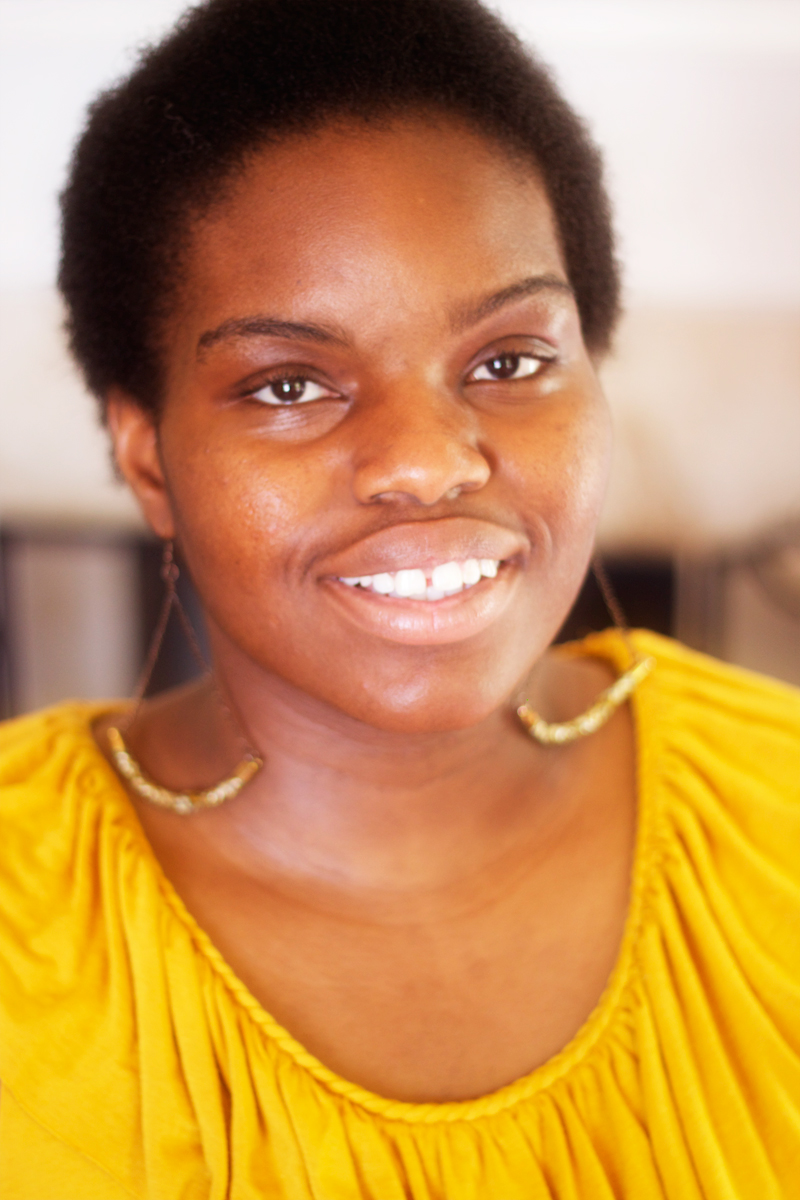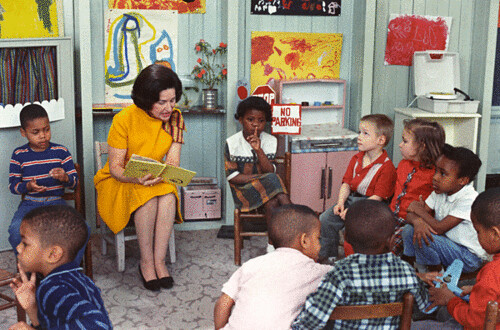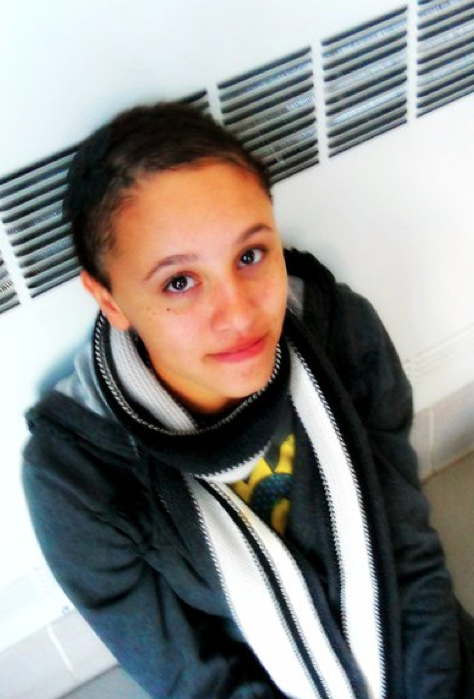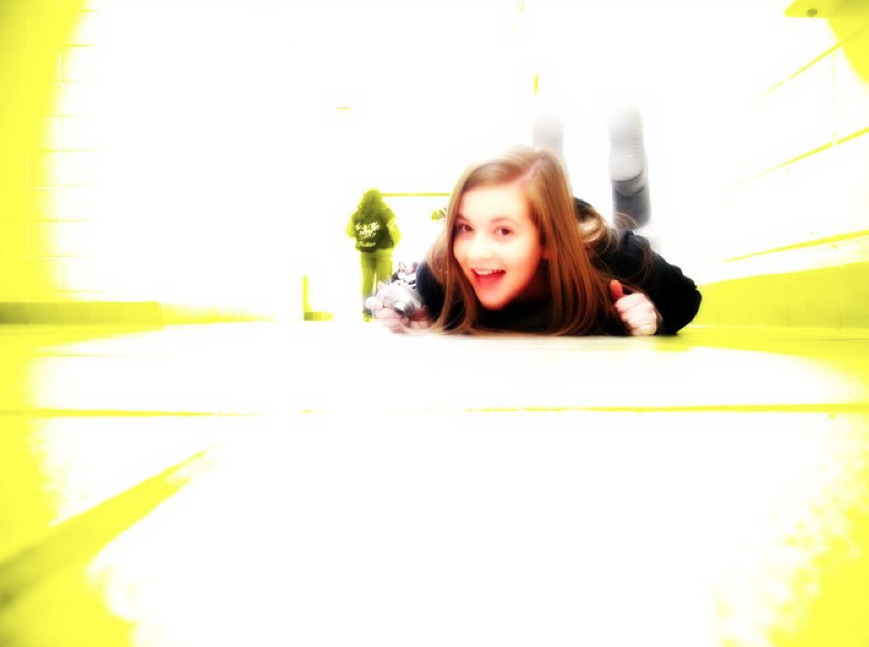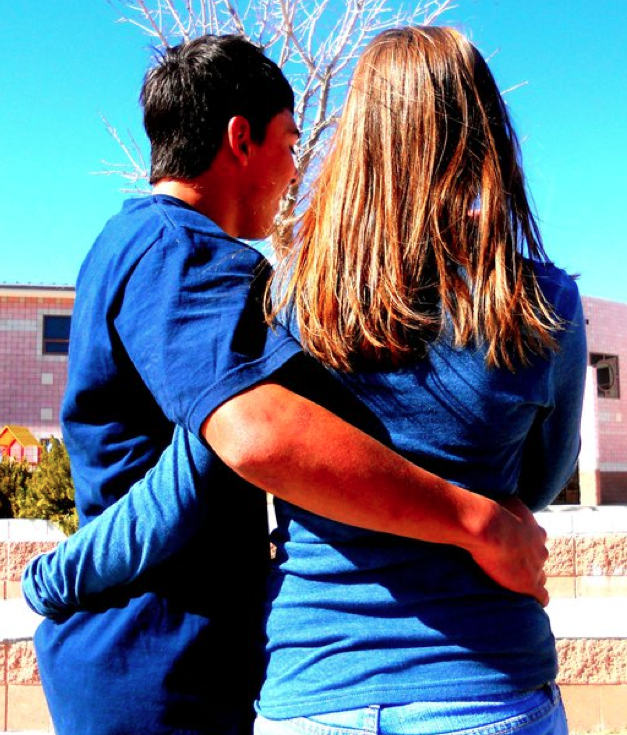To Queer Code: Ann Daramola on Learning and Teaching Computer Programming Part I
In Conversation is a Media Speaks! summer blog series where we chat with fascinating folks in the field of technology, media, and education. For our current feature, we’re highlighting women of color mediamakers, techies, content producers, and programmers.
“I've been coding for the web for about 10 years now. Over the past two years I've been developing coding curriculum that I hope will help bridge the gap between curiosity and careers for disenfranchised youth. In the meantime, I'm working as a professional web developer until I find another institution interested in radical, project-based curriculum.”
Ann Daramola is a web developer, technologist, mediamaker, educator, and computer programmer from Los Angeles, California. She’s responsible for creating and developing Afrolicious, an online network for people to create and champion their own stories. I chat with Daramola about her experiences learning and studying computer programming as an immigrant to the U.S. Daramola also shares her insights about what it means to understand, teach, and “queer” code by asking “What would a computer look like if it was coded by Haitian women?”. Check out our interview with Ann Daramola below.
Tara: Before we get into more a in-depth conversation about computer programing, can you talk about your platform Afrolicious, what is it and how it come about?
Ann: Afrolicious is a lifestyle, it’s a movement! [Laughing]. Afroicious came about around the time I discovered Twitter back in 2007. At the time, I was tweeting primarily under @simplyann, but I wanted to create something different, and that’s how Afrolicious, the Twitter handle came about. Then I bought the Afrolicious domain and started blogging about natural hair. I realized natural hair is a great movement, but it doesn’t always get to the root of our issues. In general, the natural hair movement has been about how we see ourselves or about how we present ourselves to others. So I became really excited about the idea of representation. A few years back Wale, the rapper, started a hashtag on Twitter called #thatsAfrican, which was sort of a tongue and cheek way of talking about being raised and living in Black culture. Then, Twitter ended up censoring the #thatsAfrican trend. I was so upset! The #thatsAfrican hashtag enabled some of us to tell our stories across the Diaspora. It’s a distinct experience we celebrated through Twitter until the platform censored it. Then I realized this is what Afrolicious should be about, that is, it’s about the stories from the African Diaspora. I find and curate art, music, design, books in the Diaspora and highlight them on the website.
Tara: How did you get into computer programming and coding?
Ann: I started writing stories and self publishing on my dad’s old school Apple Macintosh, the really boxy one, which was around 1994-1995. Then from around 1997-1999 I was desktop publishing, like writing stories, formatting, and printing. I got into making brochures for my church and ever since then I’ve been attached to the computer. I also wrote a lot of stories as a kid, so writing was natural for me. Then I started to tinker on the computer quite frequently. During the summers while I was in high school I had a chance to go to an aerospace engineering camp in California. Then I attended UCLA’s summer program for about four years all throughout highschool. That’s really where I was exposed to what we now call STEM education. Back then I was just making telescopes and spin dials. Then I discovered the Internet in 2002. I made my first HTML website in 2003 when I was in college. While in college, I majored in computer science and literature.
Tara: My entrance into media and technology also came from writing and telling stories as a little girl. My family bought our first computer in 1995. I was on America Online in 1996. Like you, I took to the computer immediately; using word processing to write stories, songs, and create images. I also played online in the chat room; talking to my friends who were literally down the street. The idea that I was someplace online talking and, as you say, “tinkering” was fascinating. When I arrive to college in 1999 I was taking rhetoric courses where I learned more about online chatrooms. I wrote a paper about Internet speak, or what we know as “LOL”, “BRB”, and so on.
What would you consider to have been your gateway medium into computer science, or more specifically coding and programming?
Ann: Definitely having access to a computer at home and at school helped. I would arrive to school really early and sit on the computer and Internet just playing and tinkering. I don’t how I discovered an online community forum for artists but I did, and I ended up being one of the writers on the forum. I posted my litte teenage poetry, and I’d get feedback on my poetry from people all over the world. Those connections I made online and through my poetry kept me coming back to the computer and to the Internet. I was also encouraged by my parents to use the computer to create projects for church. By the time I graduated high school it was just assumed that I would go on to pursue computer science in college, and so I did.
Tara: What languages do you know and use?
Ann: I know Java, which is the first language they teach you in college. I currently use Javascript for projects involving [Internet] browsers. I also know PHP, which is the primary computer programming language of Wordpress, and I use this language almost everyday. I also use Ruby, though I’m not as versed as I’d like to be. When I start a project where I need to build it from scratch I use Ruby. I use Java for teaching because that’s the first language I learned. I start with teaching Java since most young people will be exposed to this language when they first enter college, so this will give them a leg up. I know C, but I rarely use it because it’s just a headache (and it’s not as friendly as the other languages).
Tara: Are you self-taught?
Ann: Yes, all of the technology I use now is because I'm self-taught. In college you learn about algorithms and theories, usually based on the concept of object-oriented programming. I learned the algorithms and theories in college, but the actual tinkering, and the ability to crash a computer because you’re hacking into it is all self-taught.
Tara: Can you tell me a little bit more about the curriculum your developing and about the youth populations you hope to reach?
Ann: The curriculum is called Radical Project-Based Curriculum. I call the curriculum radical because it doesn’t depend on boring and outdated examples to address problems. We look at our community and ask what problems need to be addressed, and then look towards technology as means of solving these problems, specifically through programming. The curriculum isn’t about creating a blog. Granted learning how to create a blog is great but building this medium is not crucial for the future. Instead we want to teach youth how to create other, more complex applications; for example, an application that can tell us when the fruit in our refrigerator is going bad. The curriculum is less about how to program than it is about how to think as a programmer. When we do the exercises we slowly integrate the object-oriented syntax and so on. But the idea is to get students to think like a programmer, which is really critical thinking.
The curriculum is designed as a way to build a support system of critical thinkers who can make life decisions and solve everyday problems.
The populations I work with are teenages who are either in school or trying to finish school in a non-traditional way, or young adults (16 to 25-years-old). The curriculum asks youth to focus on the details and to ask questions that can translate processes to a programming language. The reason why the curriculum is crucial is because in between high school and college there’s a huge gap of learning. So if a student goes straight to college from high school s/he may find it difficult to grasp certain concepts in a computer programming course because the student was never really exposed to these concepts before and/or because these concepts really have nothing to do with the student’s everyday life--especially a person of color living in so-called “urban areas”. In my research I’ve looked at trade schools and universities, and I found that it’s really difficult for our young people to bridge the gap between what is taught and our lived experiences.
I believe that your lived experience can be programmed.
Tara: Bridging the gap between computer programming knowledge and lived experience is important. As a researcher looking at this gap, and as someone who doesn’t know how to code fluently, I’m very curious about how youth come to know and understand the process of coding and programming. For me, it’s still very difficult to wrap my head around coding and programming, particularly the logic of it. So on one hand I’m coming into this research from a deficit standpoint in that I don’t know a helluva lot about programming theory or application. However, on the other hand, as a media maker and communications scholar I bring with me a different way to approach studying computer programming in that I am deliberately centering the stories of youth coders and programmers in order to 1) learn more about coding and programming, and 2) to explore through ethnography what I believe will be the future of computing. Even though I’m not trained to think like a programmer or computer just yet, I'm motivated to learn from youth coders and programmers coming up now.
Can you talk more about what you think it means to think like a computer programmer?
Ann: To think like a computer programmer means to be very clear about your objectives. I used to manage a technology lab of a LA-based non-profit. I was managing over twenty computers, desktops, and laptops. I also taught web development courses at the local middle school and at an high school after-school program. I had all of these different technology things going on simultaneously and every time people would come to me frustrated saying, ‘something’s wrong with the computer, it’s not doing what I want it to do!’ I’d tell them that the computer is doing exactly what you’re telling it to do. People would get very frustrated because they felt as if the computer wasn’t understanding them. It’s like if you or I were speaking a foreign language and no one could understand what we were saying, surely then communication would break down. Understanding how computers work and understanding the basic physical architecture of a computer will help you understand how to manipulate the higher languages that are built on top of the computer.
Everything that has a computer is programmable; toothbrushes and refrigerators are programmable.
When you understand those basic building blocks of a computer, you’ll realize the process of programming applies to any computer, it’s just scaled down to a tiny toothbrush, or scaled up to a gigantic satellite. It’s just about being able to understand that there are different ways to talk to a computer.
There are languages that are developed everyday, and these languages can be more and more abstract. For example, HTML (hypertext markup language) is an abstract way of constructing the images, texts, sounds of what we call a website. It’s abstract but when you look all the way down, it’s basically zeros and ones put in patterns. You and I can’t speak zeros and ones so we come up with a way to translate those zeros and ones. There’s all sorts of jargon that goes into teaching this sort of translation but the most important thing to understand is that you’re learning a new language. You have to give yourself time to learn the grammar, syntax, vocabulary. All of the same kind of rigorous study that you would put into learning Chinese, you put into learning programming. But instead of talking to another human, you’re trying to talk to a computer.
Tara: It’s interesting that your curriculum is not about creating a blog. Though a lot of people are creating and developing blogs and by doing so they’re also teaching themselves how to code and program. I love that because it gets to the core of what’s happening behind the computer screen. That said, I also appreciate you looking beyond the blog platform and on toward more complex processes and applications. I’m interested in the how-of-the-how-of-the-how, in other words, how the image appears on the screen. Some of the questions I keep asking myself concern how computer languages get developed, how they’re understood, what’s in a code, and how might computers encode culture. I believe there’s a link between all of these things but I’m not quite sure how to articulate it just yet.
So my question to you as a coder, particularly as a women of color, how do you understand code and computer languages? What is in a code? What does it mean to code, and can the act of coding somehow speak to our ways of understanding culture?
Ann: One of my favorite questions to ask myself is, what would a computer look like if it was coded by Haitian women? What would a computer look like if it was coded by a Nigerian herbalist? How would I code this program differently if I was coding in French or from a Nigerian worldview? All of the computer languages we have now were written by a majority of white men. So their way of thinking can be considered very binary; an on and off, which is the very basic level of a computer’s architecture and processor. The central processing unit of a computer is very simply zero and one.
But take for instance Yoruba cosmology, ideas and concepts are much more fluid--it can be zero and one at the same time! These are my favorite questions to ask myself as I’m coding.
For me, coding is a very lonely experience. It’s just you, the code, and the computer, which is why I love the Internet. I can connect with large representations of people through avatars, Twitter, online forum, and talk to them while I’m going through the lonely process of coding. Coding is very lonely especially considering that I come from a huge family, where everyone is always in each other’s business, and always on top of each other. But you can’t code when people are running around distracting you. The programmer needs to concentrate. This, of course, is not to say that other professions, like carpentry, do not require some level of solitude and isolation from the world. But there’s really no human interaction in the coding process or in that mode of production.
Coming into this very Western way of computer science, especially as an immigrant, and coming into the coding culture, I’m always trying to queer it; trying to construct new ways of thinking about coding and programming. I do this in the way I teach. I use real life examples to teach the architecture and the infrastructure of processes. I use these examples in order to make ideas more accessible to students who didn’t grow up with a computer in the home. In teaching, I’m able to bring my worldview into this already established and very Westernized culture of coding and programming.
Also, a lot about programming is the idea of crashing and burning, which is another reason why I really enjoy coding.
There’s so many different ways to come up with ideas. I get excited when I see computer languages built in different human languages. We're superimposing these understandings on to a computer. Some things will match up and some things will fall off the edges. Some computer languages are limited because they don’t have the multiplicity of human languages to account for it, but we can always change the way we process, program, and present code. Certainly there are standardized rules that people have to learn. But we can always build different ways of understanding the world through computer programming and coding.
Part II of our interview continues tomorrow.
Transcribed by Tara L. Conley
Image courtesy of Ann Daramola
In Conversation with Moya Bailey of The Cruck Feminist Collective PART I
In Conversation is a Media Speaks! summer blog series where we chat with fascinating folks in the field of technology, media, and education. For our current feature, we’re highlighting women of color mediamakers, techies, content producers, and programmers.
This week I spoke with Moya Bailey, current PhD candidate in Women and Gender Studies at Emory University, blogger for The Crunk Feminist Collective, and self-described Black queer feminist who's a "southern girl through and through". We discussed everything from Frank Ocean, Black feminism online, labels, cyborgs, and the future of Digital Humanities. Read on below.
Photo courtesy of Moya Bailey
Tara: The first time I came across your work was by way of the Ms. Magazine piece in 2010, “We Are the Ones We’ve Been Waiting For: Black Feminism Lives (Online!)” You, along with co-author Alexis Pauline Gumes celebrated a newer kind of Black feminism at the intersection of online media and academia. That was two years ago. What does Black feminism look like now, particularly in the context of newer forms of online media that extend beyond blogs and outwards towards other, more micro and social platforms like Twitter and Tumblr? Is there a new theory of Black feminism on the rise?
Moya: Yes, yes, and yes! I think that Black feminism online looks different than it did before because we’re in different parts of the Internet. We’re using different tools of the Internet to accomplish our goals. There was a moment when blogs were really big and then a lot of folks switched to Twitter and Tumblr, and I think that’s definitely changed the way we’re doing things. People are also finding other mediums, like YouTube for instance, which are working for them too. People are cultivating community by way of many diverse media platforms. There’s multiple nodes where people are connecting, and I think that’s pretty awesome. I think feminism is more diffuse, which is also pretty powerful.
Tara: Yes, I’m thinking about the ways in which gender, sexuality, class, and race issues get discussed. I can’t help but think about Frank Ocean for a moment and about how he used a platform like Tumblr to talk about something so personal like his own sexuality. Ocean reminds me of how other young people continually take to these types of microblogging mediums to essentially tell their own stories.
Moya: Absolutely. And then think about way his story changed dramatically. I think after Frank published the Tumblr piece, he said something afterwards where he was like [paraphrasing] ‘Well, my first love was man, but I still date women’, which is interesting--and then there’s a response from dream hampton, who said something to the effect of [paraphrasing] ‘when I asked Frank about this piece I was doing, I asked him if I could use the word bisexual, and he said yes.’ So having access to that information in real time makes the story so much more complex and narrows the scope of what they’re saying about themselves. It’s dynamic and you can’t really put people in one place for too long, which is very cool.
Tara: Absolutely. I recently came across a Twitter conversation about labels. Poet and activist Staceyann Chin asked her followers: “Are identity labels obsolete categorizations? Are they of any use to us today?” You describe yourself as “Black” “queer” and “woman”, what do these labels mean to you? Do you even consider them labels, and do you think that labels are becoming a thing of the past?
Moya: I’m not sure what context Staceyann was tweeting so I’m not sure if agree or disagree. Labels are important to me. Those labels you described of me are important because they mark my location and say something about my perspective and where I’m coming from. So, you know, Audre Lorde talks about how naming yourself can be very powerful. Audre Lorde is a Warrior Poet, mother, lesbian, all of that. I think it’s really important for me to say that I am Black and I am queer and I was a girl child raised in the south, which means a lot about who I am, and it’s also a way for people to find me, and mark my connection to other folks who share my identities.
Tara: I believe Staceyann Chin posed the question to her followers and she tweeted a variety of responses from others who said “No, labels are obsolete” to “Yes, they totally are obsolete.” It was interesting to watch the debate occur via Twitter. From what I saw, Staceyann did a good job of moderating a controversial topic online. Moya: Yeah, I totally think it’s different for different people. I know people who really don’t feel as though they fit in the categories of ‘man’ and ‘woman’ that we have been described in the United States at this particular moment. I think it’s really important to assert that ‘yeah, these labels don’t fit me.’ But I think that even in doing that, you’re still naming yourself, even if it’s not with a label.
Read Part II of our conversation.
#inConvo
Youth Uses Online Animation Platform to Tell Story
DAVIE, FL. - Thirteen-year-old Anthony Conley is one of many digitally connected youth using free web-based multi-platform programs, like Pivot, to tell stories through animation. Online consumer-based animation programs are on the rise for youth populations, a demographic group of which 93% use the Internet (91% boys; 87% 'Black'). Pivot is relatively easy to install and use on PC operating systems (Stykz is its sister program for Macintosh operating systems). Pivot and Stykz may have positive implications for educators who are thinking about engaging ways to incorporate basic animation and design methods into the classroom. Media Make Change has made Pivot and Stykz part of the Beyond the Bricks curriculum in order to broaden the ways in which community producers can create and tell stories using digital media. Check out the interview below as Anthony talks about using Pivot.
In your own words, what is Pivot?
Pivot is an animation program that expresses who you are, like for me, if you're someone who likes Dragon Ball Z [an Japanese animated manga series].
Why do you use Pivot?
I have a very creative mind so Pivot allows me to convert my creative ideas into an animation.
What are your favorite objects or stories to create using Pivot?
Well, I usually create my own versions of Naruto and Dragon ball Z, but anything goes with me.
How does Pivot help you illustrate & tell a story?
Each scene brings new ideas. A scene could start off with a guy drinking coffee and then he might end up seeing something going on outside his window. [Pivot] brings a wide range of ideas into play.
Would you recommend Pivot to anyone?
Yes and no. I say no because it takes time and effort. You can get frustrated easily because the animation doesn't come out the way you think it should.
Do you plan on doing anything with animation or graphic design in college or as a career?
Maybe, I'm really good at it!
What other animation software do you create with?
I'm starting to use flash animation, but the rest are too complicated.
Do you create using other software technology besides animation? If so, can you list and describe them?
I use this program called Google SketchUp. It's like making a blue print for something you want to build. It's self-explanatory really. Lol.
Here's an advanced video example of Pivot animation:
Special thanks to Anthony Conley for being interviewed for this article.
Aesthetics of the Everyday Through Tatiyana's Eyes
Tatiyana is a freshman in high school with a unique eye for capturing the experiences of youth. From schooling, to friendship, to love, to simply hanging out, Tatiyana brings these special moments into focus through precision and depth. Here is her story of the everyday.
My Gangsters
Anna Marie and Joey were playfully flashing their jackets when I saw that my camera naturally lit up the hallways so that everything in it stood out. I told them to go down the hall a little more and flash the people up ahead ! Anna Marie suggested that I take the picture with Joey too (: This reminds me of teenagers for sure -- always doing crazy, random things.
My Journalism Class
This is my most favorite picture. It really shows the personalities of my friends and how different they are. Savannah (second girl pictured from the right) has a really cool look on her face that gives away so much emotion! And Joey (right next to her) looks sly and charming. And of course Anna Marie, who always has a smile on her face.(:
Lemons
I took this during jounaslism. The yellow in this picture is just for Anna Marie because it's her favorite color; I decided to just get on the ground and take a random picture and she got right on the ground with me! When I see this picture, I think of happiness lemons! Haha (:
Together
Anna Marie and Elijah, two people who are an absolute mess ! This is the very first day they were going out. I took this picture only because I wanted to capture the very first moments of a blossoming relationship.(:
Fort Bliss Comic Book
If Fort Bliss were a comic book, I know that this is what it would look like. I took this while my sister Zoe was playing soccer on the parade field. Originally, there was a golden sunset, but when I played with the tones and hues, I found that this picture looks even more magical than a normal sunset picture ! (:
